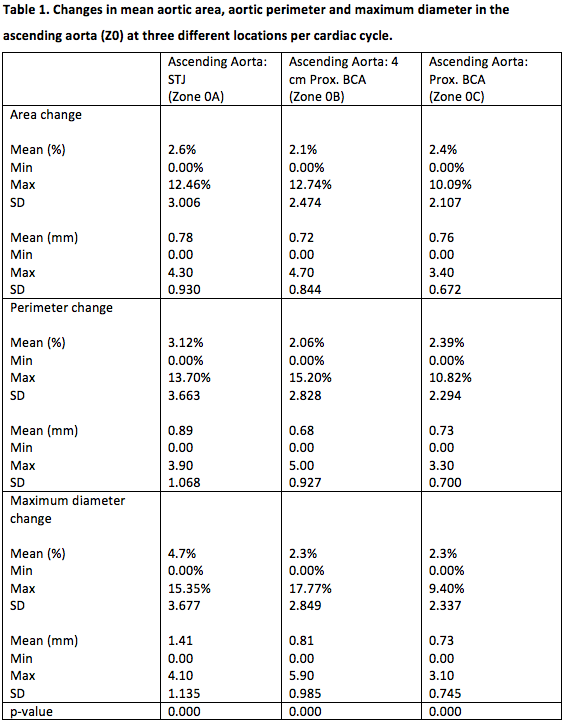Important Variances Of Longitudinal And Circumferential Movements In Z0 Of The Aorta During The Cardiac Cycle
Viony M. Belvroy, MD1, Mujeeb M. Zubair, MD1, Joost A. van Herwaarden, MD, PhD2, Santi Trimarchi, MD, PhD3, Frans L. Moll, MD, PhD2, Jean Bismuth, MD1.
1Houston Methodist, Houston, TX, USA, 2University Medical Center Utrecht, Utrecht, Netherlands, 33. Fondazione IRCCS Ca’ Granda Ospedale Maggiore Policlinico Milano, Milan, Italy.
Objective During the cardiac cycle the aorta moves in longitudinal and circumferential directions. Correct stent graft sizing is important when planning for thoracic endovascular repair in Zone 0. As the movements of the aorta are constantly evolving during the cardiac cycle, diameter may not be the only important measurement. The aim of this study is to investigate the need for additional measurements when planning for thoracic endovascular repair in Zone 0.
Methods Ninety-two patients, who were evaluated for trans-catheter aortic valve replacement, were selected for this retrospective study. Their electrocardiogram-gated cardiac computed tomography was analyzed. We identified diameters, area, perimeter and lengths of the thoracic aorta in zone 0 (Z0). The measurements were made in multi-planar views perpendicular to the semi-automatically created centerline in both systolic and diastolic phases.
Results The mean age of our study cohort was 77±11 years. The mean area change (mm2), perimeter change (mm) and maximum diameter change (mm) were compared during the cardiac cycle at three different locations in the ascending aorta. At the sinotubular junction (0.78 vs. 0.89
vs. 1.41; p < 0.001), 4 cm proximal to the BCA (0.72 vs. 0.68 vs. 0.81; p < 0.001) and at the proximal edge of the BCA (0.76 vs. 0.73 vs. 0.73; p < 0.001). The change in percentage is the smallest in the area for zone 0A compared to the perimeter and diameter (2.6% vs. 3.1% vs. 4.7%).
Conclusion This study shows the difference in measurements in the ascending aorta. The variance in the diameter is greater than in the area and it is important to understand the potential clinical implications of this finding. Especially in zone 0A where the changes are more pronounced. It may be necessary to measure the area and perimeter when planning for thoracic endovascular repair to maximize results. A prospective study comparing these different measurements regarding the outcomes is advised by the authors to understand the clinical implications. 
Back to 2020 Abstracts
